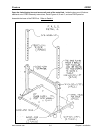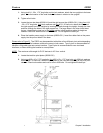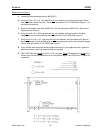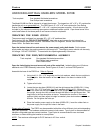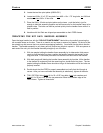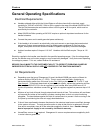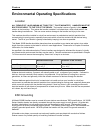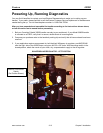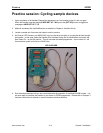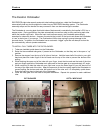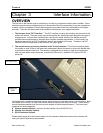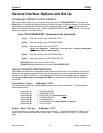
Exatron 3000B
www.exatron.com 2-11 Chapter 2 Installation
DUT Materials
Device Under Test
Component packages vary in the materials from which they're made. The composition and size of
packages can cause wear on the parts of the handler with which they come into contact. Heavy, rough-
surfaced DUTs will cause handler wear faster than lighter, smoother materials.
The best defense against the effects of the DUT material on a handler is to ensure that the handler is
properly adjusted for the package it is running. The height of the handler door over the DUT should be as
close as possible. The test site contacts should close on the DUT with enough pressure to provide good
electrical contact, but not press hard enough to force the DUT to the left or the right of the test site rail.
If you have any questions regarding handler adjustment issues, please contact the Exatron Customer
Service Department.
If your handler does experience high levels of wear due to device materials, this will generally occur at
specific points on the handler. If you wish, you may send worn-out equipment parts back to Exatron for
evaluation. In many cases, the excessive wear can be reduced by design changes or material/finish
changes. It is possible that the point which wears out can be modified into an insert which can be easily
replaced as required.
Tilt Mechanism - Table Top Mounting
A tilt mechanism is built into your Model 3000B table top handler. The slide angle may be adjusted from
12
°
to 60
°
from vertical. The tilt mechanism is easily removed as needed for large test head interfaces.
The Free Rolling Exatron Dolly (FRED) has its own built-in tilt mechanism.
The slide angle may need to be adjusted when large ceramic devices are to be tested. This is because
ceramic devices may chip or crack upon impact with other devices. Decreasing the slide angle increases
drag and slows the device down as it passes through the handler and into the output tube, which
minimizes chipping from impact. Depending upon the mass and shape of a specific ceramic device, the
angle may need to be reduced.
The handler cycle timing is sensor-controlled, so the cycle speed will be automatically slowed to match
that of the devices. The recommended angle for all plastic devices is 12
°
from vertical. The maximum
slide angle for PLCC devices is 45
°
from vertical.
NOTE: Ceramic device damage may be minimized by use of bumpers which attach directly to each
device. Some types of these bumpers will run through a standard Exatron handler. In some cases,
custom rails may be required.




